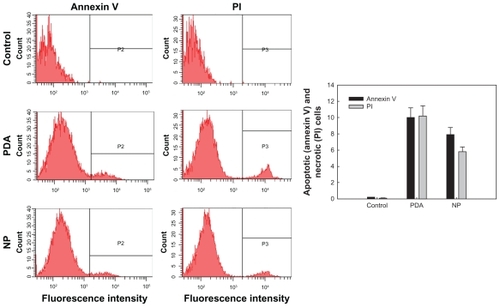Figures & data
Figure 1 Schematic illustrations of PDA-incorporated nanoparticles based on ion-complex formation between PDA and PGA. Weight ratio of PDA/PGA was 20/50 (mg/mg). The opaque solution of PGA was readily changed to a transparent solution by addition of PDA.
Abbreviations: PDA, p-phenylenediamine; PGA, poly(γ-glutamic acid).

Figure 2 Typical particle size (A) and SEM photo (B) of PDA-incorporated PGA nanoparticles.
Note: Composition of PDA/PGA is PDA5 in .
Abbreviations: PDA, p-phenylenediamine; PGA, poly(γ-glutamic acid); SEM, scanning electron microscopy.
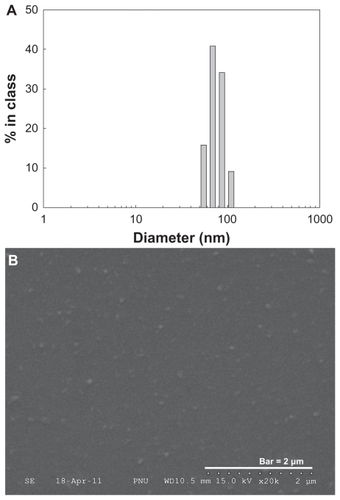
Figure 3 FT-IR analysis of PDA-incorporated nanoparticles.
Notes: PDA and PGA were used as a solid powder, and lyophilized PDA-incorporated nanoparticles (PDA5 in ) were used for FT-IR measurement. Carboxylic groups of PGA were decreased by complexation with PDA at PDA5 measurement.
Abbreviations: FT-IR, Fourier-transform infrared; PDA, p-phenylenediamine; PGA, poly(γ-glutamic acid).
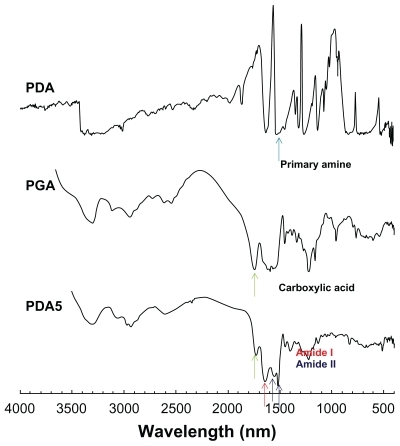
Table 1 Characterization of PDA-incorporated submicroparticles of PGA/GC complexes
Figure 4 Photos of the PDA-incorporated nanoparticles. Photo in top-left box is of ion complexes of PDA-incorporated PGA nanoparticles: PDA/PGA weight ratio (w/w) (a) 50/5; (b) 50/10; (c) 50/20; and (d) 50/40. The top-right box is of nanoparticles after addition of GC, and the bottom photo is of PDA-incorporated nanoparticles.
Note: The composition of PDA/PGA/GC is illustrated in .
Abbreviations: GC, glycol chitosan; PDA, p-phenylenediamine; PGA, poly(γ-glutamic acid).
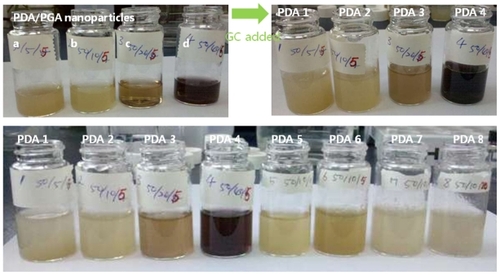
Figure 5 FT-IR analysis of PDA-incorporated nanoparticles, showing the effect of PDA content on the chemical properties of nanoparticles.
Notes: The composition of PDA/PGA/GC is illustrated in . PDA, PGA, and GC were used as a solid powder, and lyophilized PDA-incorporated nanoparticles (PDA1–5 in ) were used for FT-IR measurement. As PDA content increased, the carboxylic acid peak of PGA gradually decreased.
Abbreviations: GC, glycol chitosan; FT-IR, Fourier-transform infrared; PDA, p-phenylenediamine; PGA, poly(γ-glutamic acid).
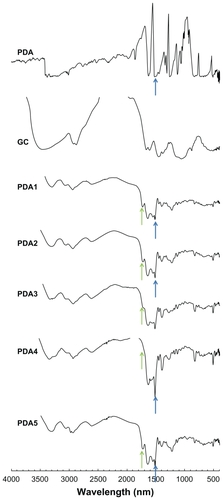
Figure 6 FT-IR analysis of PDA-incorporated nanoparticles showing the effect of GC addition on the chemical properties of nanoparticles.
Notes: The composition of PDA/PGA/GC is illustrated in . GC was used as a solid powder, and lyophilized PDA-incorporated nanoparticles (PDA5–8 in ) were used for FT-IR measurement. The carboxylic acid peak of PGA decreased with increasing GC content.
Abbreviations: GC, glycol chitosan; FT-IR, Fourier-transform infrared; PDA, p-phenylenediamine; PGA, poly(γ-glutamic acid).
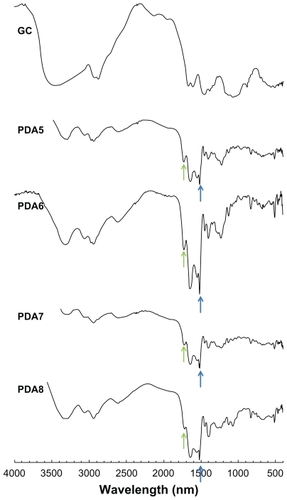
Figure 7 XRD analysis of PDA-incorporated nanoparticles.
Notes: The composition of PDA/PGA/GC is illustrated in . PDA, PGA, and GC were used as a solid powder, and lyophilized PDA-incorporated nanoparticles (PDA1–8 in ) were used for XRD analysis. The physical mixture was PGA/PDA (weight ratio = 5:1). PDA itself has sharp crystalline peaks, while nanoparticles showed broad peaks for all compositions.
Abbreviations: GC, glycol chitosan; PDA, p-phenylenediamine; PGA, poly(γ-glutamic acid); XRD, X-ray diffractometry.

Figure 8 PDA release from nanoparticles: the effects of (A) PDA content and (B) the addition of GC.
Note: The composition of PDA/PGA/GC is illustrated in .
Abbreviations: GC, glycol chitosan; PDA, p-phenylenediamine; PGA, poly(γ-glutamic acid).
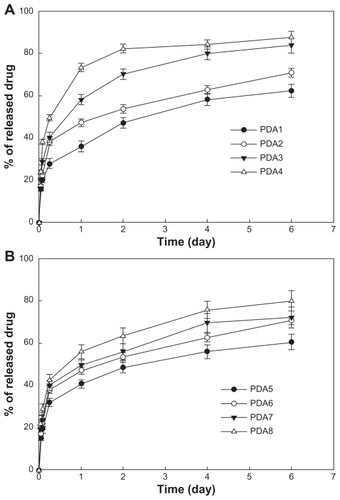
Figure 9 Cytotoxicity of PDA and PDA-incorporated nanoparticles (PDA2 in ) against HaCaT cells. HaCaT cells (1 × 104 cells) were seeded in 96-well plates, and then the cells were exposed to PDA or PDA-incorporated nanoparticles for 3 days. The cell viability was assayed using the MTT colorimetric assay.
Abbreviations: MTT, 3-(4,5-dimethylthiazol-2-yl)-2,5-diphenyltetrazolium bromide; NP, PDA-incorporated nanoparticles; PDA, p-phenylenediamine.
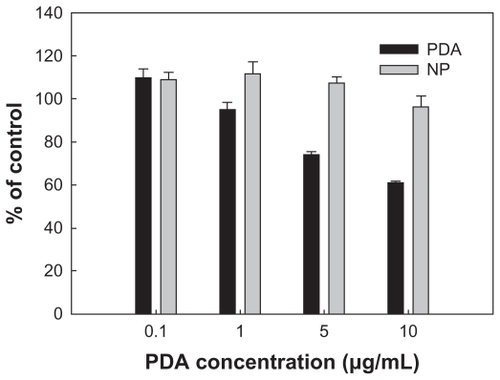
Figure 10 Flow cytometry analysis of PDA and PDA-incorporated nanoparticles (PDA2 in ) against HaCaT cells. FITC-annexin V (Annexin V) and PI were used for apoptosis and necrosis of cells, respectively. Apoptosis or necrosis of cells were analyzed using a FACScan (Becton Dickinson Biosciences, San Jose, CA) flow cytometer.
Abbreviations: FITC, fluorescein isothiocyanate; NP, PDA-incorporated nanoparticles; PDA, p-phenylenediamine; PI, propidium iodide.
